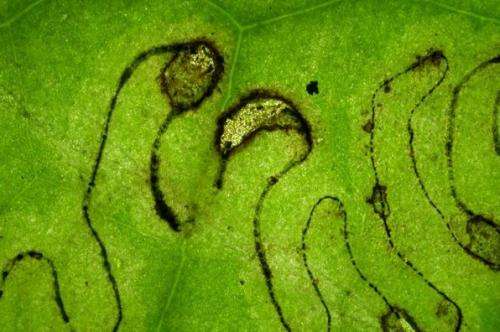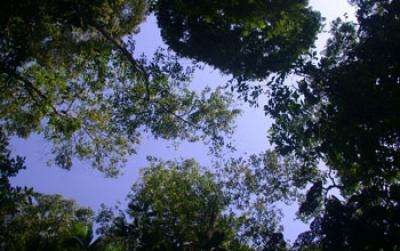Tale of two scientific fields -- ecology and phylogenetics -- offers new views of Earth's biodiversity

Patterns in nature are in everything from ocean currents to a flower's petal.
Scientists are taking a new look at Earth patterns, studying the biodiversity of yard plants in the U.S. and that of desert mammals in Israel, studying where flowers and bees live on the Tibetan plateau and how willow trees in America's Midwest make use of water.
They're finding that ecology, the study of relationships between living organisms and their environment, and phylogenetics, research on evolutionary relationships among groups of organisms, are inextricably intertwined.
Results of this tale of two fields are highlighted in a special, August 2012 issue of the journal Ecology, published by the Ecological Society of America (ESA). Most of the results reported are funded by the National Science Foundation (NSF).
The issue will be released at the annual ESA meeting, held this year from August 5-10 in Portland, Ore.
Melding information from ecology and phylogenetics allows scientists to understand why plants and animals are distributed in certain patterns across landscapes, how these species adapt to changing environments across evolutionary time--and where their populations may be faltering.
"To understand the here and now, ecologists need more knowledge of the past," says Saran Twombly, program director in NSF's Division of Environmental Biology. "Incorporating evolutionary history and phylogenies into studies of community ecology is revealing complex feedbacks between ecological and evolutionary processes."
Maureen Kearney, also a program director in NSF's Division of Environmental Biology adds, "Recent studies have demonstrated that species' evolutionary histories can have profound effects on the contemporary structure and composition of ecological communities."
In the face of rapid changes in Earth's biota, understanding the evolutionary processes that drive patterns of species diversity and coexistence in ecosystems has never been more pressing, write co-editors Jeannine Cavender-Bares of the University of Minnesota, David Ackerly of the University of California at Berkeley and Kenneth Kozak of the University of Minnesota.
"As human domination of our planet accelerates," says Cavender-Bares, "our best hope for restoring and sustaining the ‘environmental services' of the biological world is to understand how organisms assemble, persist and coexist in ecosystems across the globe."
Papers in the volume address subjects such as the vanishingly rare oak savanna ecosystem of U.S. northern tier states, revealing an ancient footprint of history on the savanna as well as how it has fared in a 40-year fire experiment.
Other results cover the influence of ecological and evolutionary factors on hummingbird populations; habitat specialization in willow tree communities; growth strategies in tropical tree lineages and their implications for biodiversity in the Amazon region; and the characteristics of common urban plants.

"The studies in this issue show that knowledge of how organisms evolve reveals new insights into the ecology and persistence of species," says Cavender-Bares.
Plants in urban yards, for example, are more closely related to each other--and live shorter lives--than do plants in rural areas, found Cavender-Bares and colleagues.
Their study compared plant diversity in private urban yards in the U.S. Midwest with that in the rural NSF Cedar Creek Long-Term Ecological Research site in Minnesota.
Cities are growing faster and faster, with unexpected effects, says Sonja Knapp of the Hemholtz Center for Environmental Research in Germany, lead author of the paper reporting the results.
"Understanding how urban gardening affects biodiversity is increasingly important," says Cavender-Bares. "Urbanites should consider maintaining yards with a higher number of species."
In the special issue, researchers also look at topics such as what determines the number of coexisting species in local and regional communities of salamanders. Kenneth Kozak of the University of Minnesota and John Wiens of Stony Brook University report that variation in the amount of time salamanders occupy different climate zones is the primary factor.
Evolution of an herbaceous flower called goldfields, and how that led to the plant's affinity for certain habitats, is the subject of a paper by David Ackerly, Nancy Emery of Purdue University and colleagues. Emery is the paper's lead author.
In all, 17 papers combine ecology and phylogenetics to offer new answers to long-standing questions about the patterns and processes of biodiversity on Planet Earth.
Provided by National Science Foundation

















